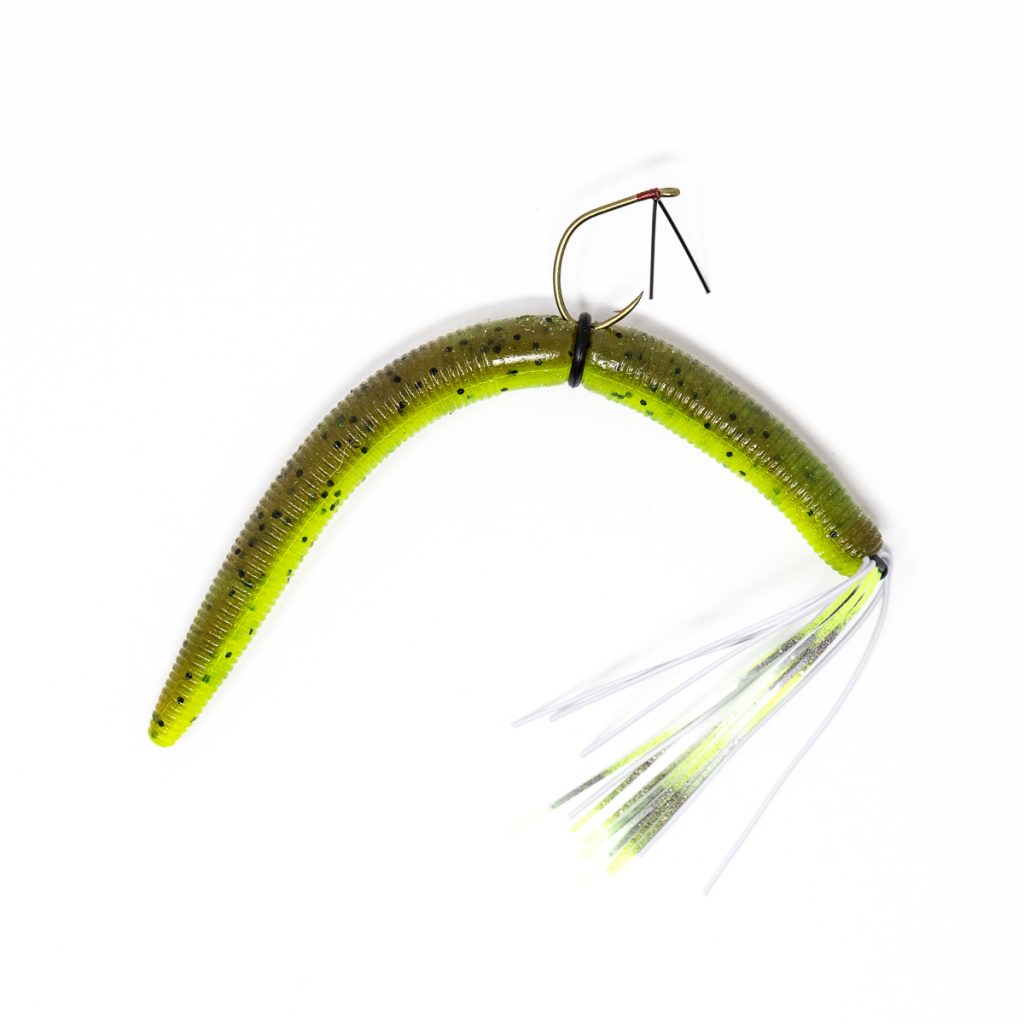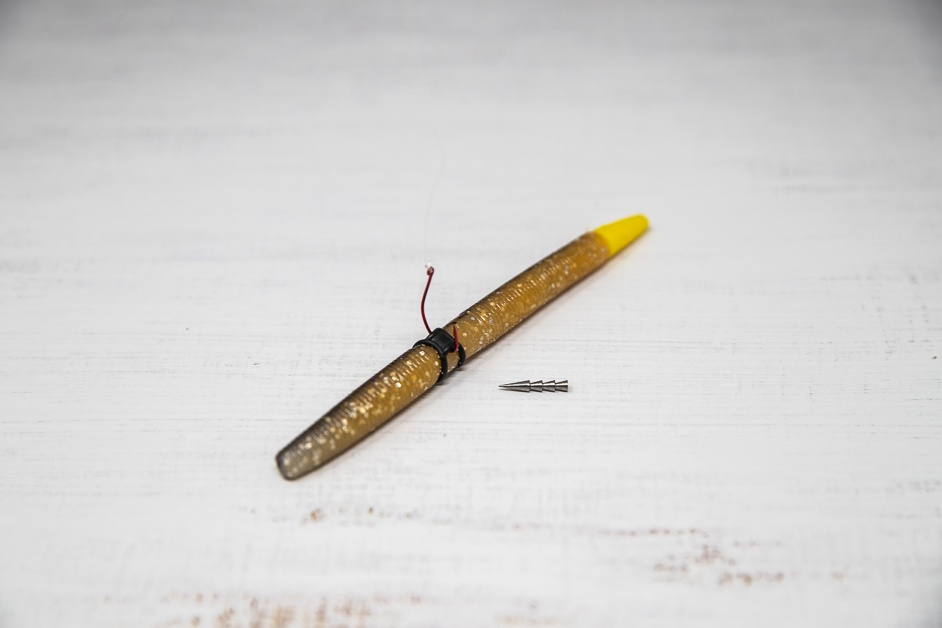You might have heard of a Neko rig, but unless you’ve specifically sought out this type of fishing, then you may not have come across it in practice. That’s because, unlike a lot of other rigs, this one didn’t originate in the United States. It comes from Japan, where it’s highly popular.
However, that’s not to say that it’s an unknown entity in the States. There are plenty of anglers in Southern California who use a Neko rig to snatch some bass when other methods just don’t seem to be working. It’s also pretty big on the professional fishing circuit too.
However, despite these touches of popularity, it’s still relatively unknown, at least compared with other rigs. Thankfully, we’re here to help. In this article, we’re going to run through everything you need to know about Neko rigs, including what they are, the setup you’ll need, the correct techniques, optimal conditions, and the best lure. By the end of the article, you might just decide that you want to give this type of finesse fishing rig a try!
What is a Neko Rig
The Neko rig might sound mysterious, but it’s not really. It’s just a soft-plastic worm with a mushroom or nail at one end to give it weight. While they can vary slightly, the basic Neko rig will have a wacky rigged soft-plastic bait, with a lead item or nail inserted in the end. Simple!
However, though the details of the Neko rig might be simple, the functionality can be highly effective. The weight allows it to sink better, making it ideal for when you’re not fishing in shallow waters, while the rigged bait ensures the fall is a less predictable gliding action. When it’s at the bottom (or near to it), the bait will stand up, which helps to get more bites. While there are other rigs that sink to the bottom, the weight of the Neko rig means that it falls faster. The reason for its increasing popularity is because, well, it works. Though it’s relatively new on the domestic fishing scene, it continues to develop and evolve, so don’t be surprised if you hear more about the Neko rig in the coming years.
Best Neko Rig Setup
The Neko rig will only be effective if you have the correct setup that’ll optimize your chances of success. You’ll need all the basics of fishing, including a rod, reel, line, and spinners.
But it’s the type of equipment you have that’ll ultimately influence your overall success with the Neko rig. It’s best to have a spinning rod, though it’s also possible to use a baitcasting reel too. In general, it’s best to go for a slightly heavier rod. Since you’ll be fishing at deeper levels, you’ll come across more resistance, and lighter rods won’t give you the power that you need. However, it shouldn’t be too heavy. This is finesse fishing, after all, and you’ll need to be able to feel the bites that you pick up. A medium strength rod is thus the preferred option.
The line is also key. You’ll need to have enough to reach the bottom of the water. As for the type of line, go for a lightweight option, somewhere between two to five pounds. This will allow enough feeling to pick up all that’s going on beneath the water. You can always increase the weight later on if needed, but when you’re just starting out with your Neko rig, start relatively light.
But for the most part, you’ll find that a lighter line works just fine. In the States, anglers tend to use heavier lines. But the Neko rig is from Japan, so it’s a good idea to follow what they use — and they prefer to keep things light. You’ll find a whole host of advantages when using a light line. For instance, you’ll feel the bottom better, can finesse better, and all-around get more fish, which is the whole point!
How to Fish a Neko Rig
The Neko rig has a lot of potential to bring in plenty of bass, but you’ll need to know how to use it effectively if you’re going to be successful.
Remember that the whole point of the Neko rig is to make it heavy enough to reach the bottom of the water. So that’s the first step. From there, it’s all about finesse.
One of the most effective methods is to allow the weight to hit the bottom and then finesse the line so that it looks like the lure is acting like a real fish. A little moving from side to side is all it takes, as this will mimic a baitfish that’s looking for food. The key part is to keep the line tight; if you don’t, then the lure may flop to the side. Once you’ve got a bite, you can lift it up slightly to secure the attachment and then reel it in quickly.
Another method is to drop the rig to the bottom and then slowly lift it up (around a foot or so). If you get a bite, then reel it in. But don’t be surprised if you have to do this a few times, especially when the bass fish are less active. They sometimes need a little motivation to feed since they’re not necessarily looking for it. However, if you do this enough times, then you’ll get something.
When to Fish a Neko Rig
The majority of soft plastic baits are designed for use in shallow waters. Soft plastics are light, which means that even if they do fall, they do so slowly — too slowly to be used for anything other than shallow water fishing.
The Neko rig is different. It’s still soft plastic, but the addition of a weight means that it can sink to the bottom. When it’s there, the soft plastic lure springs into action (which is to say, the buoyancy of the lure allows it to stand up). So you should fish a Neko rig when you want to dive a little deeper than normal.
As with any type of rig, there are some conditions when it’s better to use a Neko rig than others. The rig will work well if there are hungry bass in the area!
It’s best to give it a try when there’s been a few days of settled weather. That doesn’t matter whether it’s cloudy or blazing sunshine, so long as the days prior to your fishing trip have been the same. Bass will change up their habits when the weather changes, so if there’s a sudden shift, they’ll be less likely to feed. You can use your Neko rig all year round, but you might have some trouble getting fish on the hook during the colder months. Bass are less active when the water temperature is chilly, and the comparatively limited range of the Neko rig means you’ll have fewer tricks up your sleeve compared with other rig setups.
But if the weather is stable and the water warm (or at least not extremely cold), then you’ll find that you catch plenty! You might have some trouble if conditions are extra windy or dirty, however. Your line will have too much bow if the winds are up, while the reduced visibility of muddy waters will mean that the fish are unable to see it.
It’s not just about the climate, however. There are some fishing environments that lend themselves well to Neko rigs. Neko rigs are designed for use in areas with drop-off points that run deep. For example, from cliffs, ledges, docks, etc.
Best Lure for Neko Rig
The beauty of the Neko rig is that you probably already have the right lure in your tackle box. So long as it’s lightweight and straight, then you’ll be good to go — it just needs to stand up straight when it’s at the bottom of the water, after all. You could lose some fish if the lure is too flimsy, however.
The color will also impact your success, too. It’s best not to overthink this aspect of your setup — just keep things simple. Which is to say, they should make the conditions of the water. If the water is dark, then opt for a dark lure. In lighter conditions, mimic the colors of the fish that live in the body of water.
Conclusion
It sometimes takes a little time for fishing movements from other parts of the world to make it to the United States. Indeed, most don’t make it over — and that’s fine, because it means that they’re probably not too hot to begin with. But the Neko rig is different. This has become hugely popular in Japan, where it was invented, because of the success that it can bring. Anyone looking to catch more bass should make an effort to get this type of rig in their tackle box. When you find a spot with the perfect conditions, you’ll find that it brings in plenty of fish.















